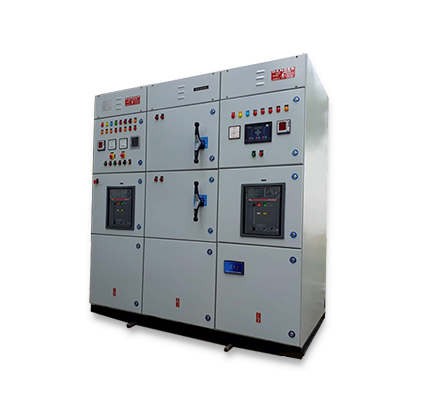DG Synchronization Panels and Renewable Energy Integration: A Sustainable Power Solution
Introduction
In today’s rapidly evolving energy landscape, the integration of renewable energy sources has become imperative for a sustainable future. As we transition from fossil fuels to cleaner alternatives, renewable energy sources like solar and wind power are gaining prominence. However, their intermittent nature poses a challenge for maintaining a stable power supply. This is where DG Synchronization Panels step in, offering a reliable solution for seamlessly integrating renewable energy sources with conventional power generation.
Renewable Energy Integration: The Need of the Hour
The growing concern over climate change and environmental sustainability has led to a global shift towards renewable energy sources. Solar panels and wind turbines are increasingly becoming commonplace in both residential and industrial settings. These sources of clean energy have the potential to reduce greenhouse gas emissions and lessen our reliance on finite fossil fuels. However,They do have certain limits, though.
Renewable energy sources are inherently intermittent. Solar panels only generate electricity when the sun is shining, and wind turbines are dependent on wind speed and direction. This intermittency creates challenges in maintaining a consistent power supply, especially when demand remains constant. To address this issue and ensure a reliable power supply, DG Synchronization Panels play a crucial role.
DG Synchronization Panels: The Key to Reliable Power Integration
Synchronization Panels, also known as Automatic Mains Failure (AMF) Panels, are intelligent electrical control panels that seamlessly integrate renewable energy sources, such as solar and wind power, with diesel generators. These panels act as a bridge between the intermittent renewable energy sources and the continuous power requirements of a facility. Here’s how they work:
1. Load Management: DG Synchronization Panels continuously monitor the power demand and supply. When renewable energy sources are generating electricity, they prioritize their use to reduce the load on diesel generators.
2. Automatic Switching: In case of a drop in renewable energy production due to weather conditions or other factors, DG Synchronization Panels automatically switch to the diesel generator to maintain a constant power supply.
3. Fuel Efficiency: DG Synchronization Panels optimize fuel consumption by starting or stopping diesel generators as needed. This ensures that generators run at their most efficient capacity, reducing fuel costs and environmental impact.
Benefits of DG Synchronization Panels
1. Reliability: DG Synchronization Panels provide a reliable and uninterrupted power supply by seamlessly transitioning between renewable energy sources and diesel generators.
2. Fuel Efficiency: These panels optimize fuel consumption, reducing operational costs and minimizing carbon emissions.
3. Environmental Impact: By minimizing the use of diesel generators, DG Synchronization Panels contribute to a greener and more sustainable energy solution.
4. Energy Independence: Integrating renewable energy sources with DG Synchronization Panels reduces dependence on fossil fuels and enhances energy security.
5. Scalability: DG Synchronization Panels can be scaled to meet the specific needs of a facility, making them suitable for a wide range of applications, from residential homes to industrial complexes.
Case Study: DG Synchronization Panels in Action
Let’s consider a real-world example of DG Synchronization Panels in action at a manufacturing facility. This facility has installed a solar panel array on its rooftop to harness solar energy during the day. However, during cloudy days or nighttime, the solar panels cannot generate electricity. To maintain uninterrupted operations, the facility relies on a diesel generator.
DG Synchronization Panels are installed to manage this dual power source system. When the sun is shining, the panels prioritize the use of solar energy to power the facility’s machinery. As soon as the sunlight decreases or disappears, the panels seamlessly switch to the diesel generator, ensuring uninterrupted production.
This integration not only reduces the facility’s carbon footprint but also provides cost savings by optimizing fuel consumption. It also enhances the reliability of the power supply, critical for maintaining productivity and customer satisfaction.
Conclusion
DG Synchronization Panels are a critical component of the transition to a sustainable energy future. They bridge the gap between intermittent renewable energy sources and continuous power requirements, offering a reliable and efficient solution. By optimizing fuel consumption, reducing environmental impact, and ensuring uninterrupted power supply, DG Synchronization Panels play a pivotal role in the integration of renewable energy sources into our energy infrastructure. As we strive for a cleaner and more sustainable world, these panels will continue to be a valuable asset in our energy arsenal.







